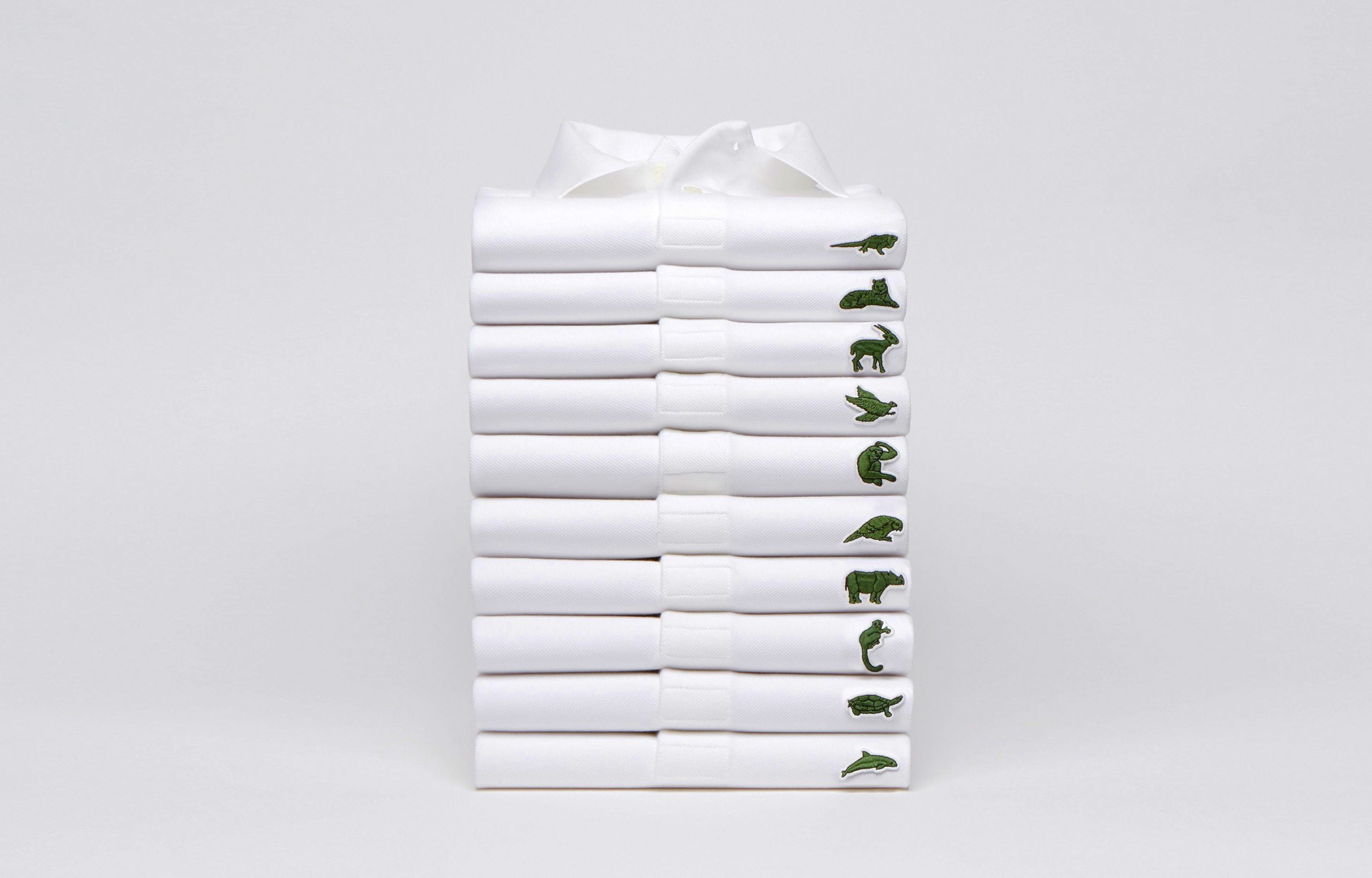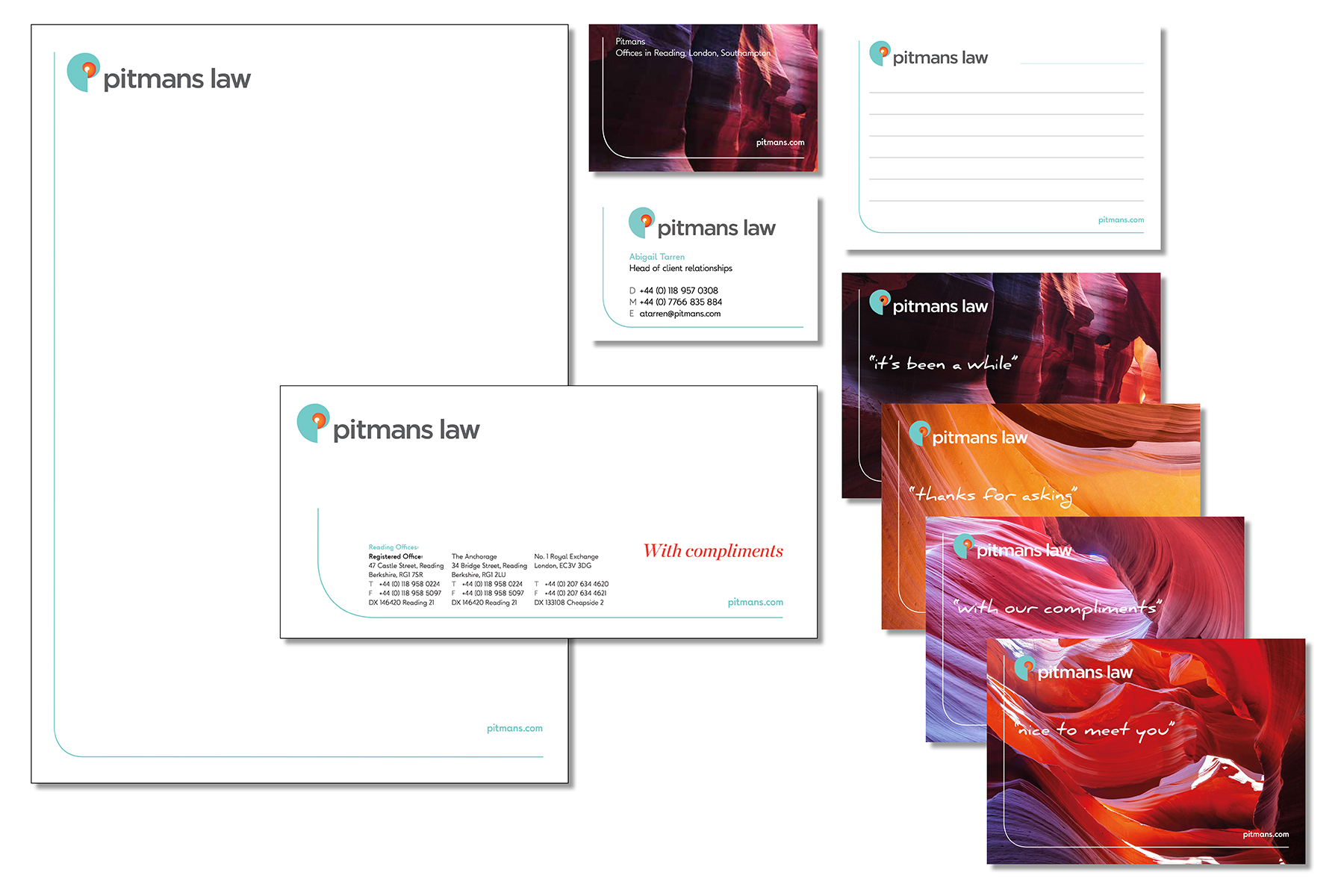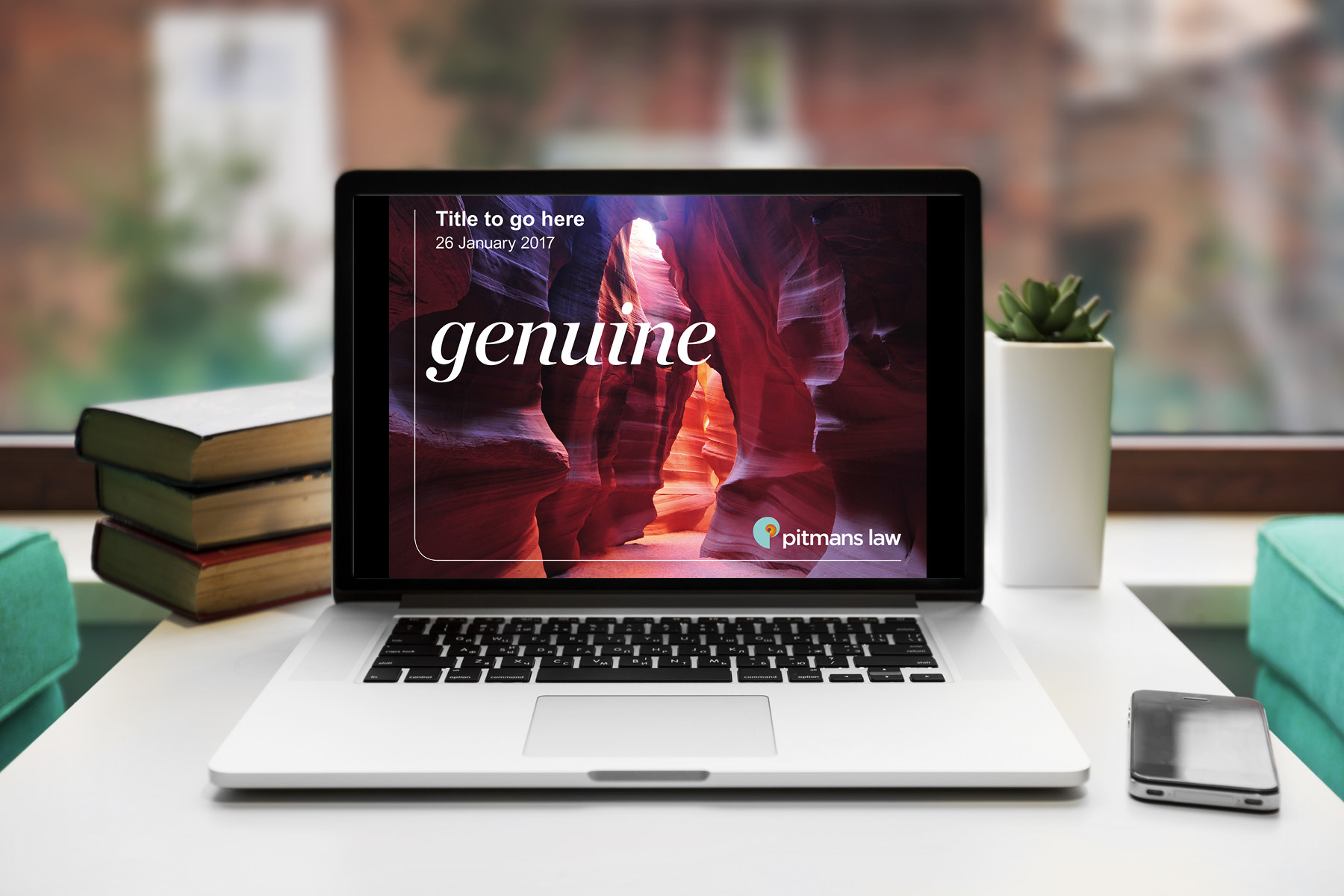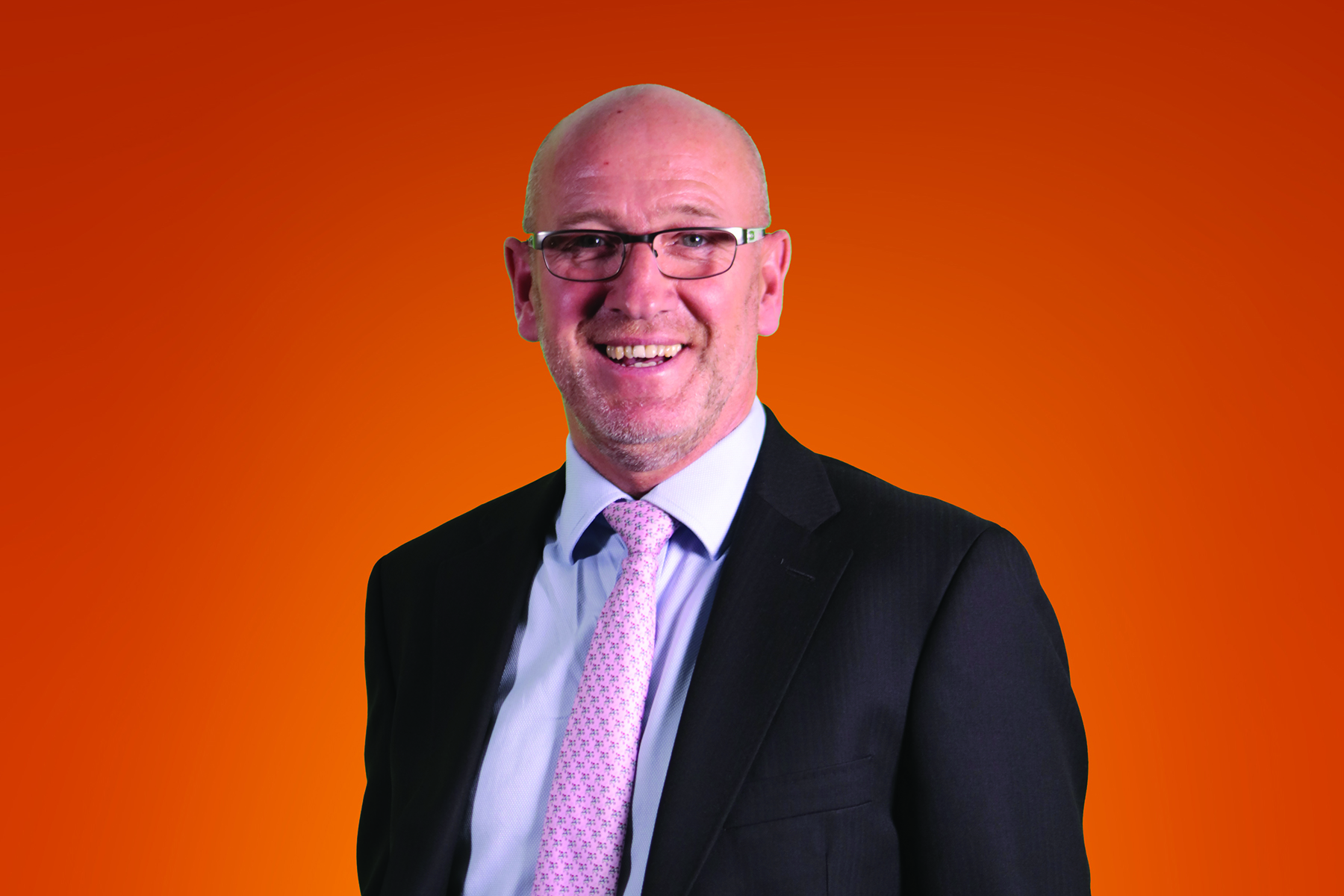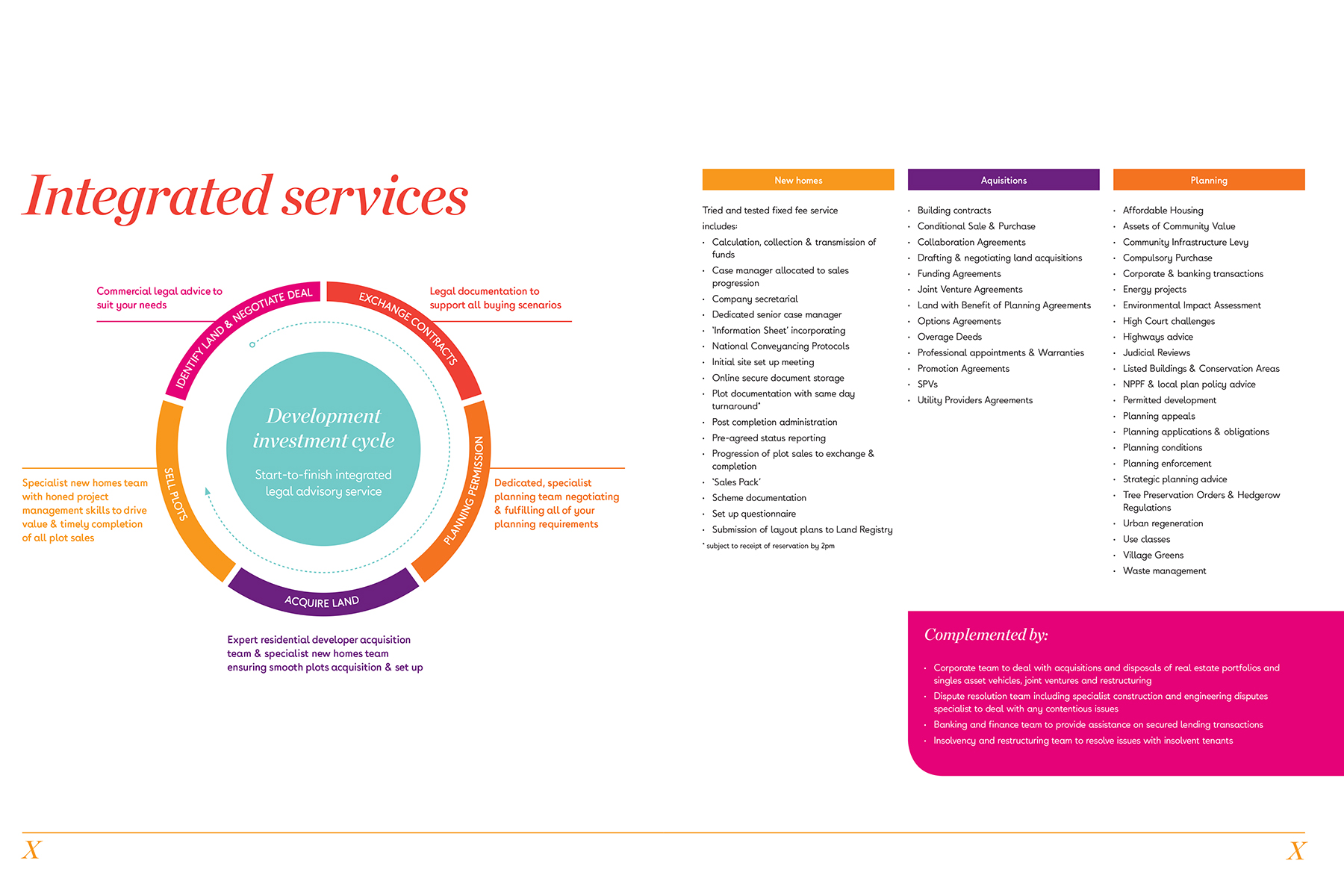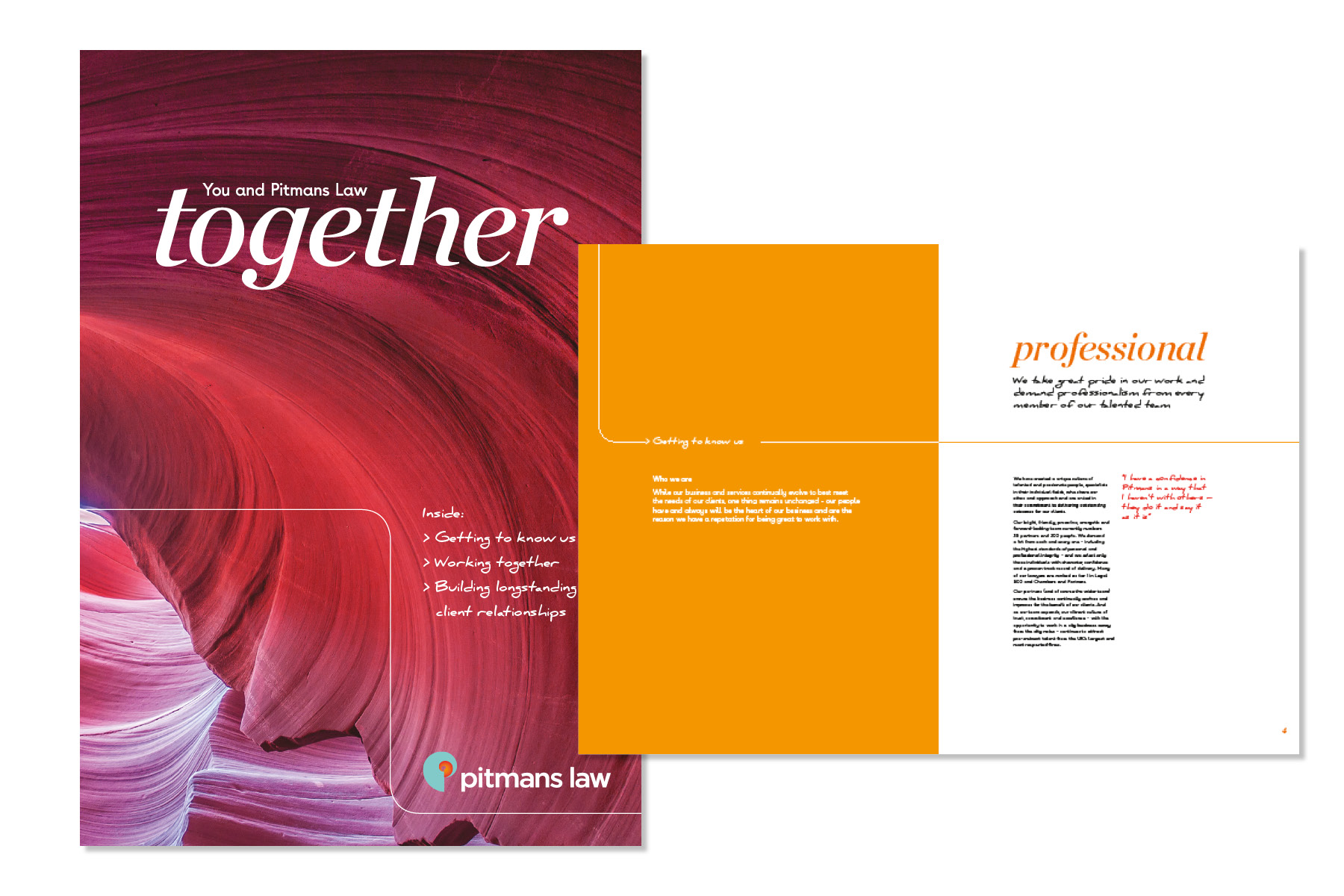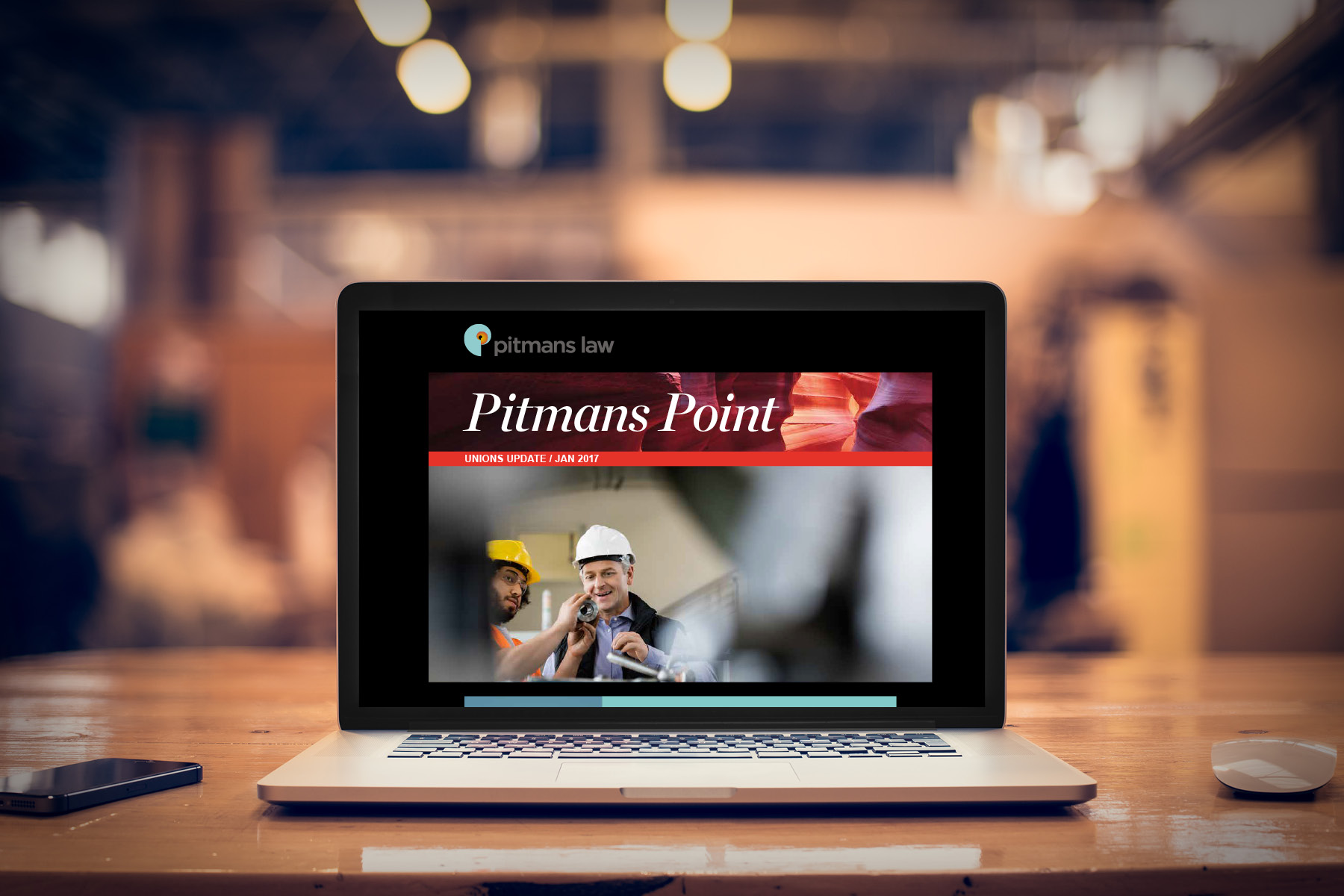The Professional Services sector has a new breed of brands, are you keeping up?
The changes over the last decade, (particularly in the legal sector) including the onset of the internet, search engines and legislative changes such as “Tesco law” – have made the legal sector seem more competitive and harder to succeed in. THIS IS NOT TRUE! There are myriad successful professional services brands out there, large and small, international full service to boutique specialist. The majority have one thing in common – they have built and maintain a strong online presence based on reputation, culture and ultimately a powerful brand. The firms struggling are yet to adopt new techniques in communication and branding, waiting for something to happen
– yet in reality more like the Fighting Temeraire being towed on her last long journey before being confined to history.
Change is not coming…
Change has already happened and it continues to evolve – which is why there is always space for fresh thinking for established firms and upstarts alike.
So is it time for you to rebrand? The important thing to remember when embarking upon the project to ‘develop your brand’ is that unless you’re a brand new start-up, you already have a brand.
That brand is not your logo, put really simply it is a combination of what you say you’re going to do and how you do it. If you say you’re going to always be punctual, stick to the quoted price and you’re experts in a certain field, then to get a reputation for reliability, value and expertise you need to prove it, time and again and if you can’t prove it, don’t promise it.
As law firms evolve and take on new talent, the brand promise becomes more granular and the delivery of it less consistent as partners and individuals build professional relationships. More often than not, relationships built on who THEY are and not what your firm is. This is great for one to one relationships but as your clients evolve and take up the services of different departments, how do you ensure you keep your promise, your service is consistent and you retain your client? First we have to look at the promise and whether we can realistically deliver on it.
What is the promise?
To understand what the brand promise is takes time, thought and a great agency to help you unearth it. Every firm we’ve worked with has a genuine differentiator amongst their proposition – their culture, niche, values and ideals or long-term plans. However, this information is often nestled in the clever minds of the partners and rarely given an airing.
Through a simple process of workshopping and brainstorming, we help to quickly identify what is truly at the heart of your business. That is:
- What you do – Your services
- Why you do it – Your purpose, mission, goal.
- How do you do it – Are you different from your competitors, if so, how?
- Who for? – Your ideal client (versus your actual clients as usually they’re not the same)
And our favourite:
- SO WHAT?! AKA, the true value to your audience that will make them sit up and listen.
A good brand will deliver on all these areas and great communication will ensure that the ‘so what’ question is always answered.
Be the first to know!
Sign up to join our newsletter
So, how do we help give your brand an elixir?
What you do?
Asking this question of your staff may yield an alarming variety of answers, if it does, that’s great as it justifies why you’re on this journey and will help you analyse what is at the core of your service offerings now and in the future. It may even throw up new opportunities.
Why you do it?
For the money surely? Actually, surely not. This is about your mission, what truly drives and excites you within your work. Work that stimulates your brain and has a purpose to it. Identify this and you’re on your way to finding the elixir of working life! Having a ‘why’ will help you win clients and attract talent as it paves the way for your culture and your mission statement.
A strong brand promise:
- Makes you stand out
- Is real and not contrived
- Can be delivered
- Can be sustained
How do you do it?
This might sound like an unnecessary question but we’re trying to find a Unique Selling Point here, something you do that’s different to everyone else. Why should they buy from you? Understanding how you operate will help inform that statement.
Who for?
This is a loaded question as you’re now well and truly on a journey of discovery and you may well have unearthed some new opportunities. So the ‘who’ for is as much aspirational as it is practical. Who do you work with now? Who do you WANT to be working with in the future. It may be more of the same, or it may be the start of a shift.
So what?
“Why should I give a sh#t?” says your prospective client? Well, here’s the thing. We just answered that, because we know why we’re doing it, we know how we’re doing it and we know who we’re doing it for. So you have a truely believable message and it simply becomes about the communication.
Developing your brand is the start of the project. Maintaining the message, evolving with market forces and technology is an ongoing challenge. But with the right tools, you can develop a comms plan and ‘tone of voice’ document and start to increase brand presence.
We’ve simplified this into a couple of A4 pages. In reality this is a full on project – but it can be painless and, more importantly, it can be insightful and life changing for your business.
So if you’ve not caught up yet, perhaps now is the time to develop your brand?
Read our guide to Professional Services Branding in the 21st Century
TWEET OR TWO
To ensure you stay in the loop and receive our news, updates and general musings hot off the press, follow us on Twitter now. We promise not to bombard you!
Just the beginning
We are delighted to have worked on the latest series of videos for Wilson Partners. Following a day’s shoot and a few days editing we delivered a series of testimonials, client interviews and a business overview to boot. They can be viewed at Wilson Partners YouTube channel.
What we said
“We’re loving this latest stage in our relationship with the guys at Wilson Partners, having seen their team grow from 2 to almost 30 in less than 10 years. We’re embarking upon an exciting content strategy with them and this is just the beginning. With the launch of a new blog featuring some exciting and inspiring interviews, some great content and a focus on some new verticals we expect to see some quality client acquisition for the Team at Wilson Partners.”
Jeremy Cuthbert / Marketing Director / Journey
Scripting

Shooting

Editing

back to all news or you may also be interested in the news below:
TWEET OR TWO
To ensure you stay in the loop and receive our news, updates and general musings hot off the press, follow us on Twitter now. We promise not to bombard you!
The workplace is becoming increasingly domesticated. When we look back to the 1980s it was all big corner desks and status chairs. Aggressive corporate art hung on the walls mirroring the hard lines of the firmly-shut doors to the C-suite, and the cubicles of the typing pool huddled outside. Everyone knew their place, and they stayed in it.
Now, thanks to concepts like activity-based and agile working, together with technological advances which mean we’re no longer chained to a desk, there are a whole variety of different spaces in which to work. Café style spaces, kitchens, sofas and bean bags. Office furniture manufacturers are selling rugs and cushions for the first time. Pool tables and computer games help people chill out in spaces which can also incorporate pilates and yoga classes. Walk into some workplaces and it’s more homely than your own home. And probably better equipped.
Domesticated workplaces have been in vogue for a while. But is this trend storing up a problem up for the future? Rather than sitting on ergonomically-sound task chairs looking at computers positioned at exactly the right height on supportive desks, people are curled up in bean bags or on sofas precariously balancing laptop or iPads on their laps. Or hunched over café style tables pounding away on a laptop. Comfortable for short periods, but long-term working in this way risks causing neck, back and joint strain together with issues with eyesight. And that’s without considering how easy it is to spill your coffee over yourself – or your laptop – when it’s balanced on a beanbag.
The key is education. Back in the 1980s the office manager would train people how to use their desks through formal workstation assessments. They’d have a somewhat dull tutorial on how to adjust the chair to suit the height of the monitor, where to position that monitor and the keyboard to ensure the line of sight was right, and arms and hands were positioned correctly at the keyboard. Ergonomic mouse mats (remember them?) and wrist supports helped people to avoid repetitive strain injury, while specialist task chairs supported those with back problems.
Now even those people working at desks, often desk-share or hot desk and could find themselves working in several different desks throughout the day. The idea of adjusting the furniture each time to suit individual ergonomic requirements has gone out the window along with the power suits and the rolodexes. And there are no rules on how to sit ergonomically in a beanbag, though the first ergonomic beanbag is probably already in production.
We need to go back to basics and educate people on how to actually work in this new style of working. Yes slumping on a beanbag to relax is fine. Working there for six hours is not. Using a café-style area for a meeting, or to catch up on emails is no problem. Spending all day in the Starbucks concession leaning over a laptop is a no-no. And that’s without thinking about all those people working from home at their kitchen tables. Many organisations might have qualms about re-introducing formal workstation assessments (although by law they should have been doing them all along). But they don’t have to be dull and can be supported with entertaining cartoons and charts posted around the office. This type of formal training in how to work and use the furniture and equipment is essential if the generation currently sprawling in beanbags have a hope of being able to do the same in 40 years’ time.
TWEET OR TWO
To ensure you stay in the loop and receive our news, updates and general musings hot off the press, follow us on Twitter now. We promise not to bombard you!
1 It’s emotive and impactful. Moving images and sound trigger emotional responses in a way that the written word alone cannot. This creates stronger connections between viewers and your product or service.
2 Convey more in less time. “If a picture paints a thousand words then a 60 second video is with 1.5 million words”. Video has the ability to convey more information and elicit greater recall of your product or service in 60 seconds than the viewer would get from reading static copy for the same period of time.
3 Video is great for sharing. When content creates a strong connection with the consumer they are much more likely to share that content with their networks. As video is the best medium for creating strong connections it is therefore also highly shareable. 92% of mobile video consumers share videos.
4 Search loves video. Search engines prioritise the content that attracts and retains viewers most effectively and video does both – exceptionally well. In addition, the second biggest search engine after Google is YouTube. 75% of users go to a company’s website after viewing a video about their services.
5 It will increase traffic to your website. Not only does video draw more traffic from search but by embedding video into your landing pages can increase conversion rates by 80%. Visitors spend 2.6 times longer on pages with video than those without.
6 Easily measurable. Even the most commonly used, free video platforms offer simple but deep and compelling data to evaluate how your content is performing and inform decisions around future productions. Don’t forget, simple ‘number of views’ stats are almost meaningless. With video stats you can see exactly where your audience peaks and drops as well as who is watching and for how long.
7 More efficient lead generation. Businesses using video require 27% fewer unique visits to generate the same amount of leads. Video can be used at each stage of the sales funnel to engage, inform and convert and will ultimately reduce your cost per-lead.
8 Increase conversion to sale. Visitors watching a video are 64% more likely to purchase a product or service. Video viewers get a more complete picture with easily absorbed information about your product or service. Armed with more and better information, they are more willing to commit to purchase. 84% of consumers say they have been convinced to buy after watching a brand’s video.
9 Increase effectiveness of mailshots. Emails with ‘Video’ in the title have 19% higher open rates and videos in emails can increase click-through rates by 65%. Consumers want their news in the most engaging and easily digestible format possible. They know video can deliver this.
10 Reduce customer service requests. Over 50 % of businesses say that video has helped reduce the number of calls to Customer Support by effectively conveying more complex information and answering FAQs.
11 Grow revenue. Businesses using video grow revenue 49% faster than those not using video and 52% of marketing professionals state video is the type of content with the best ROI.
12 Don’t get left behind. Over 90% of B2B organisations use video in their marketing, with over 65% receiving a positive ROI. Video is forecasted to account for over 80% of all internet traffic by 2021
With all of these facts and statistics to hand it is likely that you will immediately want to increase the amount of video content your create for your business, or even start creating some if you haven’t yet. However, it is crucial to note that all of the compelling facts about the effectiveness of video content are predicated on carefully planned and well executed video content. A poorly executed video production and distribution strategy can result in the absolute opposite results to the facts and figures above. Fortunately help is at hand as we are experts in video strategy and production and can advise you every step of the way.
TaleFin work with sister company Journey to produce and mange engaging video content to help clients build their brands, spread their message and raise their profile. Are you ready for video?
References:
“If a picture paints a thousand words then a 60 second video is with 1.5 million words” James McQuivey/Forrester2
“92% of mobile video consumers share videos.” Invodo3
“75% of users go to a company’s website after viewing a video about their services” Invodo4
“by embedding video into your landing pages can increase conversion rates by 80%. Visitors spend 2.6 times longer on pages with video than those without” ReelSEO5
“Businesses using video require 27% fewer unique visits to generate the same amount of leads” Aberdeen Group7
“Visitors watching a video are 64% more likely to purchase a product or service” ComScore “84% of consumers say they have been convinced to buy after watching a brand’s video.” Wyzowl8
“Emails with ‘Video’ in the title have 19% higher open rates and videos in emails can increase click-through rates by 65%” Forrester/Eloqua9
“Over 50 % of businesses say that video has helped reduce the number of calls to Customer Support” Vidyard10
Businesses using video grow revenue 49% faster than those not using video Aberdeen Group “52% of marketing professionals state video is the type of content with the best ROI” Syndacast11
“Over 90% of B2B organisations use video in their marketing” ReelSEO “Video is forecasted to account for over 80% of all internet traffic by 2021″ Cisco12
TWEET OR TWO
To ensure you stay in the loop and receive our news, updates and general musings hot off the press, follow us on Twitter now. We promise not to bombard you!
All aboard the social train!
Over the last 10 years businesses have largely accepted that social media is here to stay. The majority have even incorporated it into their daily activity, if only out of fear of being left behind by the competition.
Needless to say, fear of missing out is not a good reason and usually leads to half hearted social accounts pumping out bland and self promotional content to an audience that isn’t listening.
There are exceptions, however; those few businesses that are active on social media because they understand that’s where their audience is, the kind of branded content that will engage that audience, and perhaps most importantly of all, how exactly success will be measured.
In short, they have a clear digital brand strategy, and recognise that social media is just one set of channels through which this brand strategy will be distributed.
Marketing is not an output solution
Too often marketers concentrate on individual channels. Digital marketers are particularly guilty of this. We like to carve things up into specialist areas – SEO, email, Facebook, SMS, instagram, blogging, etc… Don’t get me wrong, there is absolutely a need to have specialists within your team who understand the more technical elements of each platform, but it must all ultimately flow from one thing – your brand.
- Consistency – building a brand demands absolute consistency in message, image and tone. If your social media content is not tied together by your brand then you will not build a meaningful relationship with your audience. No matter how many likes, shares or followers you achieve, your relationship will be entirely temporary and superficial.
- Efficiency – creating your content each month with no central brand theme is an exhausting and impossibly difficult way to operate that demands the generation of an endless stream of fresh and inspirational ideas. On the other hand, if you have one central brand strategy it provides a direction and framework for every piece of content you create. Furthermore, these pieces of content can then be distributed across all channels (perhaps with some minor tweaking) and you can even reuse the content again months later as you know it will have maintained relevance.
- Be heard – your brand exists, among other reasons, to ensure you can cut through the noise. It should pull out the one thing that is true to your business that connects you to your audience in a way that no other brand can match. This is essential if your content is to cut through the endless sea of competing brands busy tweeting, blogging and sharing.
- Build a real asset – your social media activity should be building something of value. Something that in time your brand will become famous for. That may be a community, it could be thought leadership, it could be funny user generated content. Whatever it is, it will only come about if there is a consistent and long term focus on that thing, and that will only be the case if it is a clear overarching strategy for your brand.
Without a clear brand strategy you will work harder for less impact, less consistency and less value. Once it is in place, however, your content will efficiently and consistently deliver on your goals and your channel activity, including social media, will all but take care of itself.
back to all news or you may also be interested in the news below:
TWEET OR TWO
To ensure you stay in the loop and receive our news, updates and general musings hot off the press, follow us on Twitter now. We promise not to bombard you!
Meet TaleFin, the video content specialist
We are delighted to announce that we teamed up with former MTV and National Lottery producer Max Tilney, to launch TaleFin – specialist in video content production and optimisation.
What we said
“Brands are becoming more and more fluid through the onset of all things web, so it is a natural fit to extend our offering to video production”
Jeremy Cuthbert / Marketing Director / Journey
Logo

Website
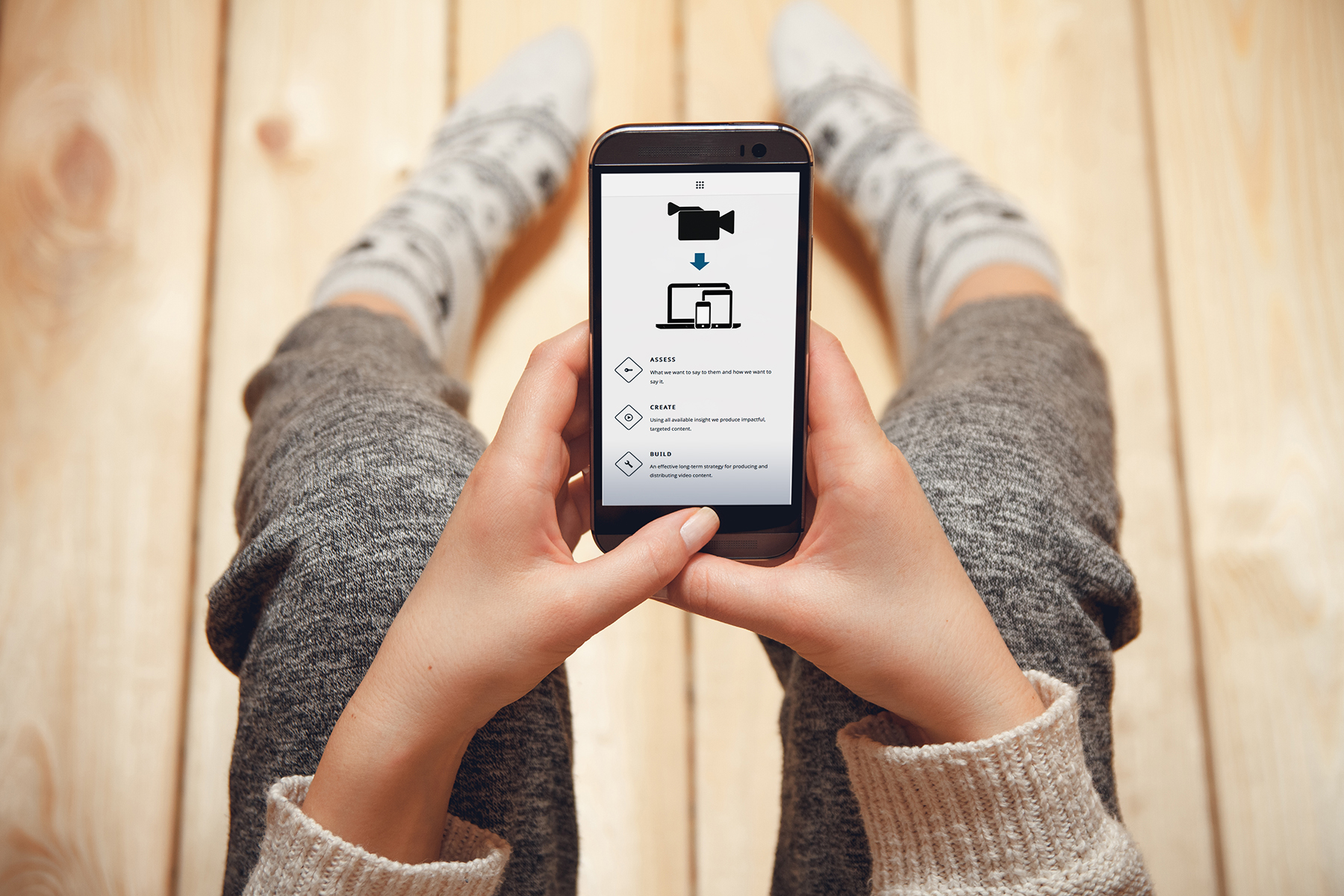
Email marketing

back to all news or you may also be interested in the news below:
TWEET OR TWO
To ensure you stay in the loop and receive our news, updates and general musings hot off the press, follow us on Twitter now. We promise not to bombard you!
What do people say about you when you leave the room?
Perhaps you can answer that question with accuracy….perhaps you’re not sure ….or perhaps you worry about what the real answer might be?!
Whatever your feelings are on the answer you can be sure that decisions have been made, judgements confirmed and people pigeon-holed within moments of making that crucial first impression. According to Malcolm Gladwell, in his book Blink: The Power of Thinking Without Thinking, we make up to 11 judgements, many of which happen subconsciously.
There is a reason companies spend a fortune on establishing, maintaining and protecting their brands. A good brand guides an organisation in what it does and how it does it. Customers’ perception of that brand determines how successful the business is. In fact a brand is often the magic ingredient – the competitive edge that makes people choose one product above another. However, if a business isn’t purposeful about the way it manages perceptions of the brand, it may have a totally different and far less successful outcome.
A personal brand is no different.
Some people find the word ‘brand’ a little unpalatable or even cliché – what we mean here by personal brand is simply being true to the values and principles that make you who you are.
A strong personal brand takes time to establish, consistent effort to maintain and most importantly, rigorous self-awareness and humility to drive forward.
Soft Skills = Hard Results
Throughout school and beyond we are told to focus on getting qualifications.
85% of your financial success is due to your ability to communicate, negotiate and lead.
Only 15% is due to technical knowledge.
According to the Carnegie Institute of Technology soft skills are fundamental in helping us achieve our goals. Research carried out by Daniel Goleman suggests that 67% of a leader’s success is due to their Emotional Intelligence (EQ)
EQ, not IQ, is the differentiator of success.
Emotional Intelligence starts with self-awareness and is one of the most effective ways of improving your impact and results. Knowing how the brand you project impacts others will determine how effective you are at influencing and therefore creating the outcomes you want.
Already nailed it? Really?
Many successful, seasoned professionals feel confident that they can, and do, project a good brand. Whilst this might be true some or even most of the time it is incredibly difficult to maintain a consistently strong brand.
At DRIVE we have a simple test for this which in our experience, 8 out of 10 these highly experienced and influential C-Suite professionals fail – and many are shocked at what they discover.
Whilst it’s always better to make a good first impression, a strong personal brand will enable you to maintain your influence and we believe that it’s never too late to create the impact you want.
So, rather than wondering what they’re saying about you when you leave the room read our 15 Steps to building an effective Personal Brand.
- Be Purposeful.
A brand isn’t an accident. It is curated over many years, it uses the values you hold dear, is a ‘conscious competence’ to be applied over and over again until it becomes an unshakeable part of who you are. It requires investment of both time and energy – even when you have precious little of either. It may begin as an ambition and with repeated, purposeful application it becomes simply who you are.
- Be Authentic.
Push yourself to understand your true motivations, principles, fears and rivalries. Once you can be honest with yourself about your own values, abilities and shortcomings (remember: self-awareness is key!) then you are more likely to be able to remain true to yourself with confidence. To be honest with someone else – to look them in the eye and give them feedback that they might not like – takes real confidence. If you aren’t confident about yourself then your body will sabotage you by releasing unhelpful hormones that will spill out in your body language.
- Pursue Excellence.
Your brand is the very best version of yourself that you can design. It represents your ‘Berocca’ you (You – but on a really good day!) As Stephen Covey says in his 7 Habits book those who seek excellence will always be looking to improve or as he puts it, finding ways to ‘Sharpen the Saw’. It is what you aspire for people to say about you and for you to be able to honestly say about yourself. It requires that you don’t hide from unpalatable truths about yourself, rather you acknowledge these then act to change.
- Be Self-Aware.
Know not only how you’re perceived by others but crucially know what pushes your buttons. Take a good look at all your behaviours, beliefs and motivations and truly understand them. Know what causes you to lose control and how that impacts on yourself and others. Actively elicit feedback from friends and foe to understand what people see when they look at you. This takes courage. If your opinion and theirs aren’t congruent then there lies the opportunity.
- Be Consistent.
Recession, office politics, a stressful home life, huge sales targets…..there will always be external influences that might have the power to dilute the impact you have – to dilute the brand that you are. An unshakeable brand is the one people reach for when uncertainty abounds. How can you ensure that you are consistent and can keep your head when ‘All about you are losing theirs’ (Rudyard Kipling, IF)
- Be Resilient.
The ability to bounce-back from any setback is an enviable quality – one that enable the best leaders to withstand incredible amounts of pressure and stress. It is also a quality that can be learned (as demonstrated by Martin Seligman in a project at Pennsylvania University). By building your own bespoke toolkit for improved resilience you will ensure that you have the ability to protect and maintain your performance regardless of the environment and prevailing conditions.
- Be Positive.
There is a reason that world-class athletes use positive visualisation techniques as part of their training. Looking for – and imagining – the most positive outcome trains your brain to create an improved outcome. Choosing to be actively positive also ensures that you’re less likely to be unconsciously pushed into your ‘fight or flight’ response by your sympathetic nervous system which is constantly primed to protect you from threat…perceived or real.
- Be Energising.
Being internally positive is not enough. Make sure you’re someone that people chose to spend time with. This is also known as being a Radiator because you ‘radiate’ warmth, positivity and energy. Energising people influence consciously and their impact is always useful. The opposite behaviour to a Radiator is that of a Drain – thus called because of their ability to drain all energy, positivity and hope out of a situation. Many people may accidently dip into Drain behaviour as a result of any number of factors. The bad news is that Drains are as contagious as Radiators. Find strategies to remain a Radiator.
- Be Adaptable.
Emotionally Intelligent people are quick to adapt their own behaviour to get the best from every relationship. Linked to confidence, adaptability relates to how open you are to the strengths of others and how open you are to learning from opposing styles to ‘value the differences’ (Covey) and create fantastic, new results. Adaptability prevents people from becoming entrenched in less agile thinking patterns and leads to creativity, innovation.
- Be Receptive.
Stay open to others thoughts and opinions, even if you have little respect for that person. Listen fully and without prejudice. Brands that sustain a competitive advantage recognise that great ideas can come from anywhere and anyone. If you only listen to people with status and to those you like then you’ll be fishing in a very shallow pool.
- Be Empathetic
We all like to think that our view of the world is the best, don’t we? That our way of thinking and our values and our habits lead to the best outcomes. It’s only natural that this happens. Once you’ve truly listened, a strong brand can better understand what good looks like from another’s position and – if appropriate – amend their own opinion as a result. Truly effective brands can do this even when they are in conflict with the other person.
- Be Observant.
With 55% of our communication coming from non-verbal signals we could all improve our impact by paying more attention to body language. What a great brand can do is watch and notice others whilst also managing their own non-verbal ‘spills’ – the incongruence between what is said and what the other 55% is communicating. How often have you noticed what your face is doing in a long meeting? A strong brand pays attention and knows what signals to look for to indicate that their message isn’t ‘landing’, thus saving time and energy and helping to secure the best outcome.
- Be Humble.
Authentic brands aren’t concerned about always being right, they are happy to accept that they might be wrong. They seek to understand how they might be contributing to an un-helpful situation and seek to address what they can change about themselves before looking for change in others. Crucially, they do not let their ego dictate their response.
- Be Brave.
The best brands take risks and accept that some will work and some won’t. What they don’t do is stay safe. Being brave isn’t always about making massive jumps into the unknown, sometimes the biggest risk is simply to have a conversation (with yourself or another) that involves telling the truth that has long been hidden. You can’t expect to achieve excellence if you remain in your comfort zone so develop strategies that enable you to improve your comfort with discomfort.
- Be Responsible.
Above everything, a great brand takes responsibility for its own choices, decisions, goals and results. It doesn’t seek to blame others when things don’t go as planned and it celebrates and rewards itself when they do.
Journey works with a number of complementary businesses and individuals. This blog was written by Becky Tilney of DRIVE UK Consulting Ltd. DRIVE support their clients in creating their bespoke personal brand. Both through workshops and 1-2-1 coaching they work to embed this brand, support its consistent application and to help deliver impactful results. A brand requires constant attention. DRIVE advises clients to regularly review their performance against these 15 key indicators of personal brand success.
TWEET OR TWO
To ensure you stay in the loop and receive our news, updates and general musings hot off the press, follow us on Twitter now. We promise not to bombard you!
It’s the Law! Pitmans Law brand refresh and website unveiled
6 months in the making following on from Pitmans brand refresh, we’re delighted to have been part of the new Pitmans web site launch.
Working with David Jerram and the digital team we started out by meeting with each of the key stakeholders, before producing a functional spec, wireframes, prototypes and the full site. Case study coming soon…
What we said
“We’ve worked for many years in the legal sector and the new Pitmans Law web site has been a privilege to work on. It’s a big site, but with the project team at Pitmans being so well organised, we hit every deadline in the process, without compromise”
Jeremy Cuthbert / Marketing Director / Journey
back to all news or you may also be interested in the news below:
TWEET OR TWO
To ensure you stay in the loop and receive our news, updates and general musings hot off the press, follow us on Twitter now. We promise not to bombard you!
Its here! avsnet’s corporate video
We are delighted to have worked on this flagship piece of video marketing for one of the Comms industry’s most exciting young businesses. The challenge was to help deliver a multi layered message with a lot of information in an engaging and informative style – and we delivered. From an outline, basic brief we wrote the script, produced the storyboard, animated the graphics, chose the music, recorded the voiceover and put it all together. See it for yourself here. If you need help with video, or even just a content schedule – get in touch. You can watch the video here.
What we said
“Video is such a key element of how we communicate to audiences in this day and age, so adding video production to our list of services was a no-brainer. It was a pleasure to work on this piece with avsnet – the feedback has been tremendous”
Jeremy Cuthbert / Marketing Director / Journey
Storyboard
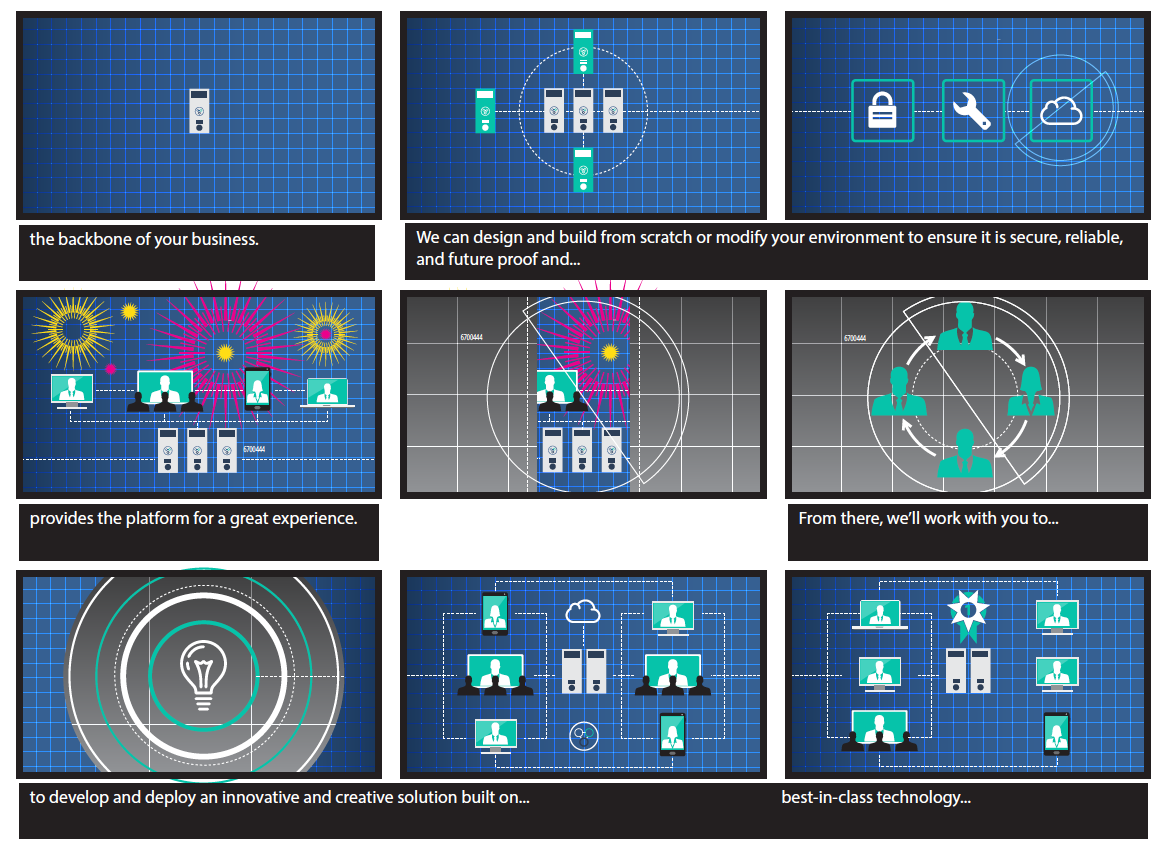
Iconography

Video

back to all news or you may also be interested in the news below:
TWEET OR TWO
To ensure you stay in the loop and receive our news, updates and general musings hot off the press, follow us on Twitter now. We promise not to bombard you!
Brexit – A shock referendum result, political turmoil, plummeting pound and stock market volatility, it is the dawn of a new era – rise of the pragmatist.
Following the shock Brexit result, the biggest difficulty is not knowing how long it will last and what the long term outcome will be. So, many business owners will be wondering how to prepare for what they don’t know lies ahead.
Uncertain markets call for extra diligence in all of our businesses’ operations and of course, one of those key operations is marketing and communications. Not simply how we can market ourselves, but how we communicate the appropriate message to clients and prospects. Uncertain markets also throw up unexpected opportunities.
There is no absolute right or wrong here as all businesses use a different mix of marketing communications to speak to their clients, but hopefully the following pointers will at least help you prioritise certain elements within your marketing strategy.
1) Stick to your core values
Brexit doesn’t mean you have to change. You’ve probably taken years to get where you are and your clients stick with you for a reason. Whether that’s the quality of your product, your service, the ingredients or all of the above. Anything you do that has a negative impact, will not get past your clients. So maintain consistency of your standards and don’t give clients a reason to look elsewhere. If you’re not entirely sure what those values are and why your clients set you apart, now is a good time to bring in a third party for a brand workshop.
2) Keep in touch with your clients
Before you go looking for new clients, go and talk to your existing ones. Be honest with them, work with them, see if they have opportunities for you in other areas, but ignore them at your peril. It’s much harder to find a new client than to retain one.
3) Don’t slash your prices
A shock like Brexit can cause panic. If you’re losing turnover it can be easy to slash your prices to win back market share. In this scenario you are effectively ‘buying business’. This is not sustainable as it not only can have short term effects on your profitability, but makes it harder to increase fees in the future. Instead, look to see what your real value proposition is. Look at how your customers feel about your brand, and communicate with them effectively to reinforce what’s great about your business. Another opportunity to run a workshop around your brand and understanding your true uniqueness.
4) Build your brand creatively
This is something you should have front of mind at all times, but it is evermore important during challenging times. It is inevitable that some people will cut budgets and make less noise. This presents a perfect opportunity for the brave ones to amplify their presence, use creativity in their messaging and acquire new clients in the process. Look at the whole marketing mix. Ensure that all avenues used to communicate with clients are on message and consistent.
5) Keep your team informed and motivated
If you’re feeling uncertain about the future, chances are, they are too. This is the time to dig deep, to motivate, inspire and lead them to great things. Much easier to sell when you’re confident and motivated. A well executed internal comms programme could help.
6) Rewrite the plan
If budgets are being cut, then remember you wrote your marketing plan with another budget in mind. So if you have to take a knock to your budget, don’t simply spread it across your spend or knock one large piece on the head, this may not be right. Your market is different now, new opportunities exist and others have gone by the wayside, so rewrite the plan and make sure you’ve factored in the new opportunities and worked out how to realise them.
7) Be prepared for lift off
Remember, we’re not in a recession, we’re not even in a downturn. A quick resolution to the Brexit situation and a clear understanding of the long term effects could reinvigorate the economy overnight. Spending will rise and more opportunities will come, so be prepared to take advantage.
8) Don’t panic!
Keep a level head and a broad mind. If you focus on only one issue, chances are your concerns will become self-fulfilling. Remember to keep on top of your comms and ensure you’re communicating and advising your clients regularly.
At Journey, we help our clients understand who they are, what they’re about and how to talk to their audience. Whether it’s top line messaging through to a deep rooted set of values we can help with identifying your ‘Je ne sais quoi’ and take it right through to delivery whether in print, digital and beyond.
back to all news or you may also be interested in the news below:
TWEET OR TWO
To ensure you stay in the loop and receive our news, updates and general musings hot off the press, follow us on Twitter now. We promise not to bombard you!

